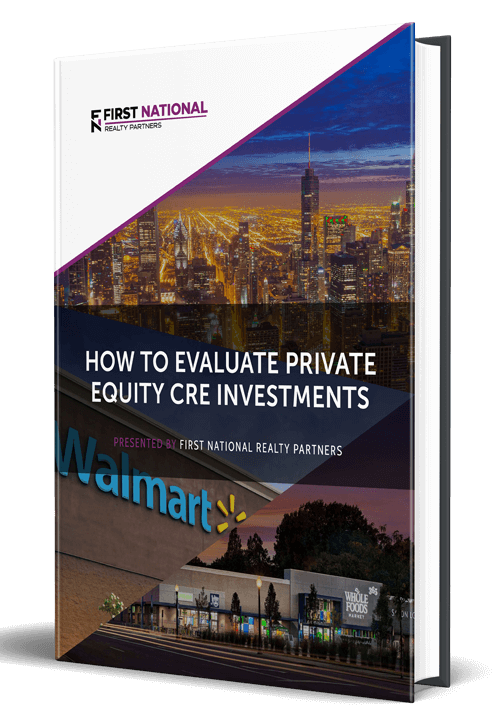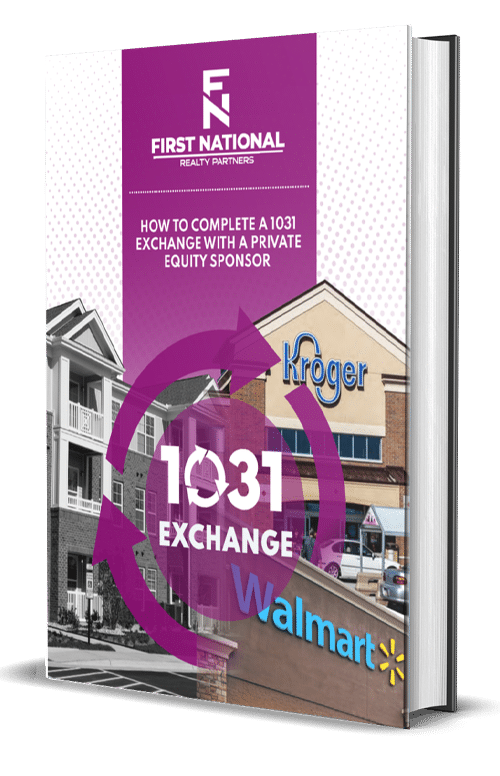Like all investments, there is a distinct risk/reward tradeoff with private equity real estate. The higher the risk, the higher the potential reward (or loss). The best investors have a knack for recognizing the risks in each transaction and take proactive steps to mitigate them as part of their project plan.
As a real estate private equity firm that accepts money from outside investors, it is our job to clearly and accurately describe the risks in each transaction to our investment partners. At the same time, we also recommend that our investors complete their own due diligence – independent of ours – to ensure that a private equity real estate investment in commercial property is consistent with their risk tolerance and time horizon.
*Please note that investing in private equity real estate is different from REIT investing or investing with a real estate fund. If you would like to learn more on REITs vs. private equity, you can read here.
In this article, we will explain 9 risks to consider when analyzing a real estate private equity investment.
1. Regulatory Risk
From zoning to entitlements and rental rates, real estate transactions – especially those associated with new construction – must navigate a complicated web of local, city, and sometimes state regulatory authorities. Often, they have a say on project details that can make it more difficult, costly, and/or complicated to build or manage a real estate investment.
Mitigating regulatory risk in private real estate investing requires detailed knowledge of the current and potential regulatory environment and where the proposed investment fits within it. Partnerships with local civic leaders can prove to be valuable when trying to stay abreast of proposed changes to laws or regulations that may impact the investment.
2. Market Risk
Real estate prices are driven by a variety of factors including interest rates, population changes, job growth, and inflation. These factors must be considered at both a “macro” and “micro” level to determine how broader economic trends can affect local demand for real estate. Certain pockets of the country have a tendency to change faster – or slower – than the economy as a whole. For example, 40% of the national job growth since 2009 has occurred in just 20 cities.¹ In real estate, markets matter and it’s important to understand the local dynamics prior to making an investment.
Diversification is the key to mitigating market risk. Some markets will boom and some will fall behind, but exposure to a diversified portfolio of markets will smooth variations in returns.
3. Financial Structure Risk
Many real estate projects – especially large ones – rely on an amalgam of sources for money to finance the transaction. Collectively, these sources are known as the “Capital Stack” and each “level” comes with its own set of rules. For example, the senior debt holder is typically first in line to receive money in the event of a bankruptcy, whereas the common equity holder is usually last. Individual investors placing money with real estate private equity firms tend to fall into the common or preferred equity position of the capital stack so it is critical to understand the risks and benefits of this position and be compensated accordingly.
For an investor, the best way to mitigate financial structure risk is to have an explicit understanding of the capital stack, their relative position in it, the rights and preferences that position affords, and the alignment of incentives that it creates.
4. Asset Risk
Whether investing in stocks, bonds, gold, timber, or real estate, each asset class comes with a unique set of risks. With real estate, the risk is specific to the property type. For example, there is always going to be demand for apartments because individuals need a place to live so multifamily housing is considered to be on the lower end of the risk spectrum. On the other hand, the success of properties like shopping malls or hotels is highly correlated with consumer discretionary income so they may suffer from cash flow issues more than apartments in times of economic distress.
Mitigating asset risk requires an explicit understanding of the unique risks associated with the specific property type and the construction of a business plan to minimize them.
¹ “As superstar cities thrive, others get left behind.” Reuters – July 2019
5. Credit Risk
In commercial real estate, there are four major asset classes: industrial, office, retail, and multifamily and they all have one thing in common…tenants. Credit risk is the risk that a tenant can’t – or won’t – pay their monthly rent. Property values are driven by the amount and stability of the rental income stream so the strongest tenants will command the highest values.
To mitigate credit risk, it is vitally important to perform financial analysis on current and potential tenants to ensure they have the financial wherewithal to make their rent payments for the entirety of their lease term(s).
6. Liquidity Risk
By definition, liquidity is the ease with which an asset can be converted to cash. A share of Apple stock may be converted in a matter of seconds while a multi-million dollar commercial real estate property may take weeks or months. When evaluating liquidity risk, it’s important to consider a variety of factors including property type, tenants, location, and price point. For example, a single-tenant Walgreens in Orlando is likely to have multiple offers whereas a small retail strip center in Tulsa may not see the same demand.
Mitigating liquidity risk means investing in high volume markets and in assets for which there is a high likelihood of strong demand at the end of a holding period.
7. Replacement Risk
Real estate markets run in cycles. In markets with high demand, the desire for space tends to drive lease rates higher, which is great. But, those same lease rates may eventually get to a point where it makes economic sense to build new space. Given the choice between new space and old space with the same rent, a tenant will likely prefer the newer space, which could render the old space obsolete. As such, replacement risk is the possibility that an asset may be replaced by a newer, sleeker, and more advanced property for the same rental rate.
To mitigate replacement risk, a thorough understanding of replacement cost is required to know if it makes economic sense to build a new building in response to market demand. If it does, it is likely that competitors will emerge and that renovations will be required to keep up with the market. Replacement costs may vary by property type, and sub-market.
8. Property-Specific Risk
We’ve discussed market risk and asset risk – which are important considerations – but there’s another risk that is specific to an individual property or project. It may also be referred to idiosyncratic risk. For example, in a construction project, it’s important to consider the likelihood that the required approvals can’t be obtained or that the soil on the site is contaminated with chemicals or other environmental pollutants. Or, there may be risk associated with a property’s specific location. Those million-dollar views can be wiped out by new construction on a neighboring parcel. Real estate investors should familiarize themselves with the specific investment property prior to making an investment decision.
Evaluating – and mitigating – property-specific risk requires a thorough evaluation of every aspect of the property type, its location, and the jurisdictional authorities with agency over it. Recognizing where the risks lie and building a business plan around them should minimize property-specific risk.
9. Leverage Risk
One of the many reasons that real estate is an attractive investment is that the use of debt, or leverage, helps to boost returns. But, there’s a fine line between just enough and too much debt. A property that is over-leveraged has a narrow margin for error before it may run into problems whereas a property with a healthy amount of debt can absorb falling rental rates or extended vacancies more easily.
As a general rule of thumb, a property with debt higher than 75% of its value has an elevated risk profile. Further, properties with mezzanine debt or preferred equity in the capital stack tend to get complicated, which also introduces another layer of risk that must be considered.
Whether it’s with us or another firm, any investor considering a private equity real estate investment should carefully consider the risks described in this article and shouldn’t hesitate to ask questions where they have them. The best firms will be open and transparent with their answers and the fund managers will go out of their way to explain their investment thesis in a clear, concise manner. Accredited investors interested in becoming limited partners should also review the track record of any firms they are considering to understand past successes and failures.
Interested in Learning More?
First National Realty Partners is one of the country’s leading private equity commercial real estate investment firms. With an intentional focus on finding world-class, multi-tenanted assets well below intrinsic value, we seek to create superior long-term, risk-adjusted returns for our investors while creating strong economic assets for the communities we invest in.
Whether you’re just getting started or searching for ways to diversify your portfolio, we’re here to help. If you’d like to learn more about our middle market retail investment opportunities, contact us at (800) 605-4966 or info@fnrpusa.com for more information.






